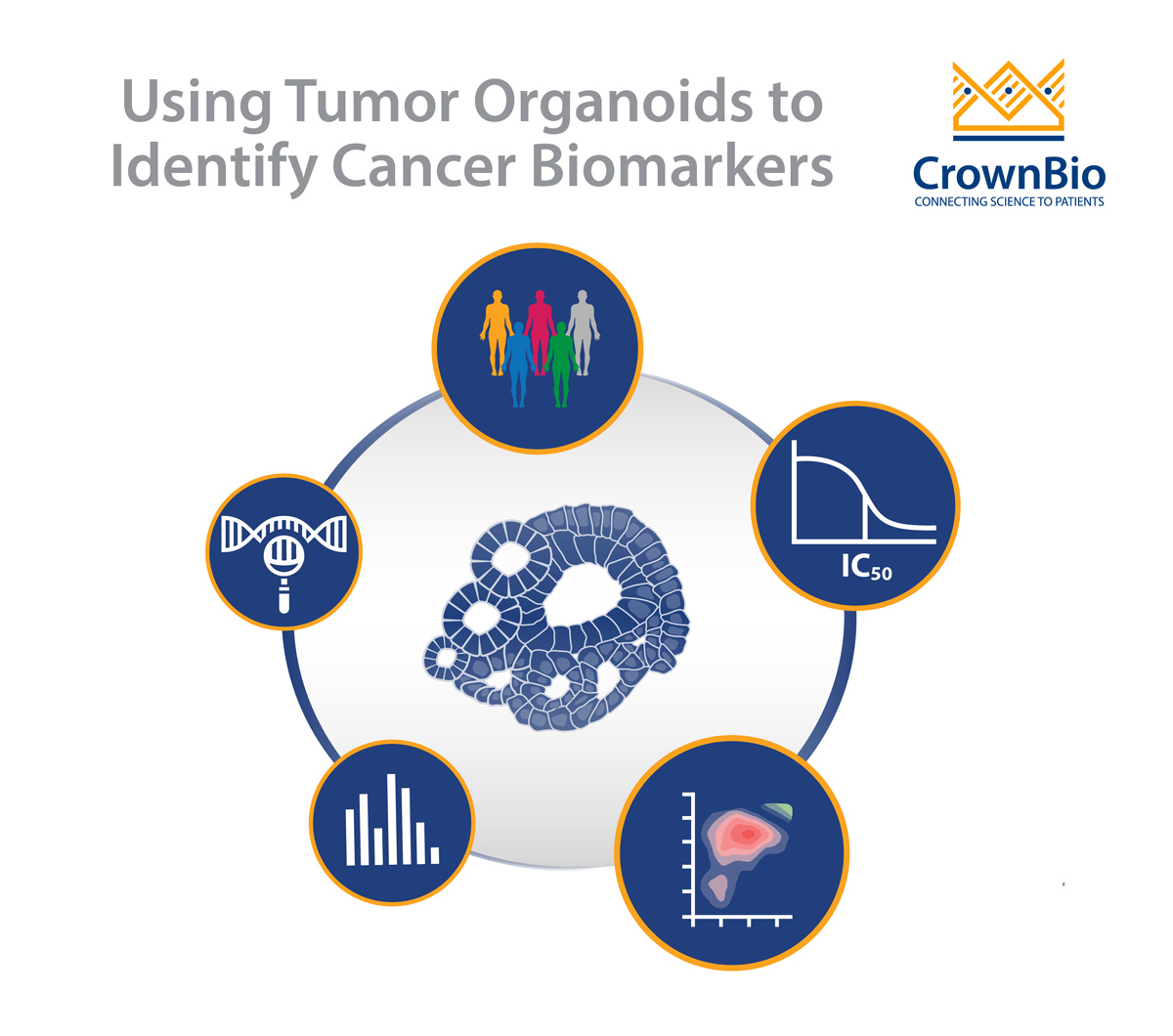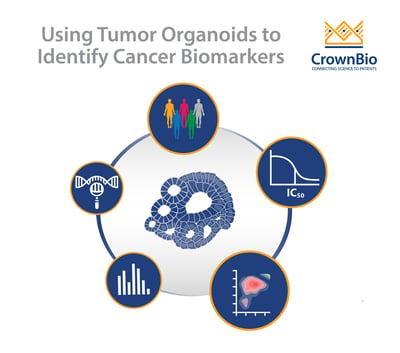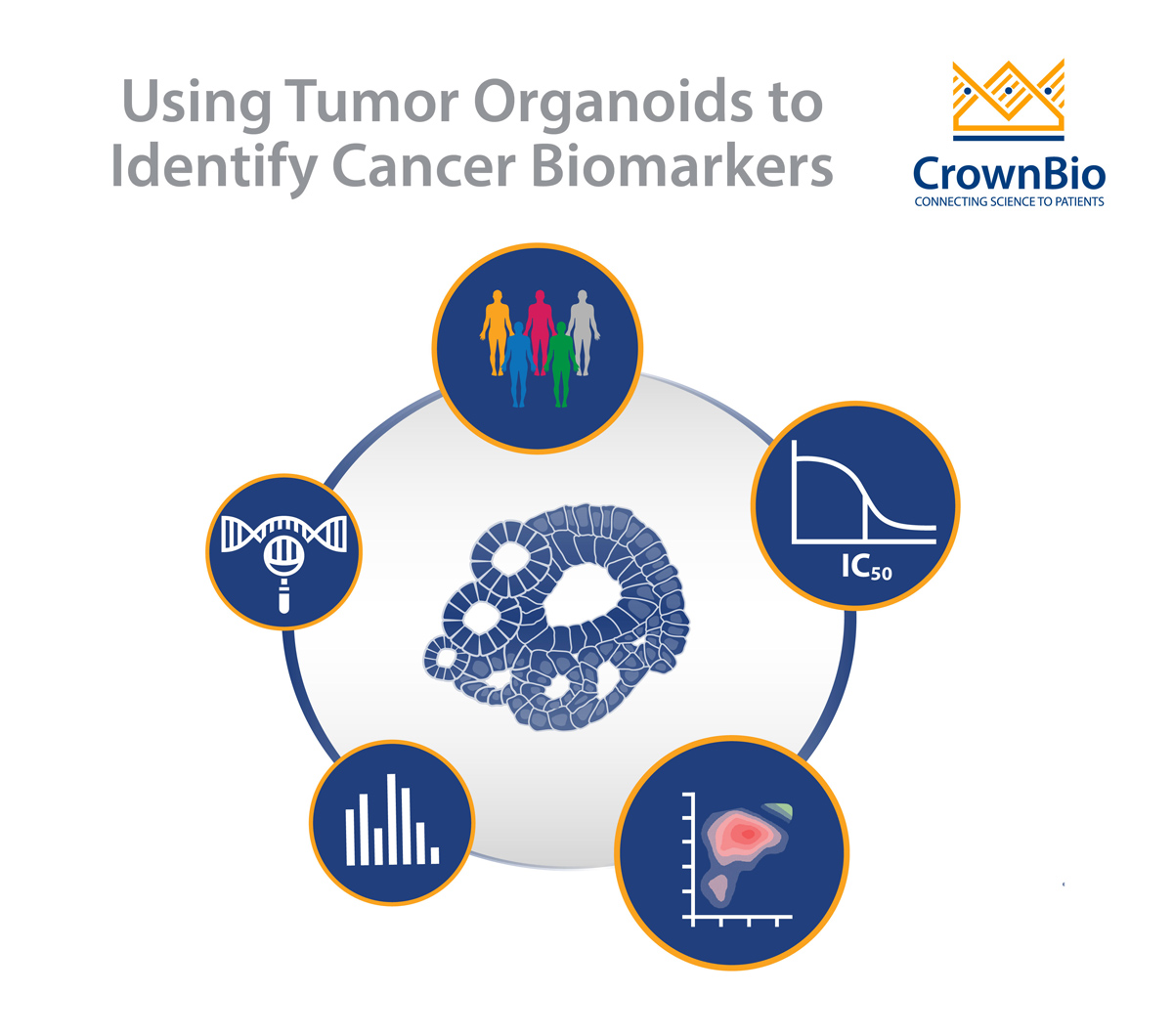Using Tumor Organoids to Identify Cancer Biomarkers

 Review why and how to use 3D in vitro tumor organoids to identify cancer biomarkers.
Review why and how to use 3D in vitro tumor organoids to identify cancer biomarkers.
The Value of Biomarkers in Oncology Drug Development
Cancer is an extremely heterogeneous disease, with individual patients showing widely differing responses to the same treatment. It’s therefore not surprising that approximately 97% of oncology clinical trials fail, but that a higher success rate is achieved when studies use a biomarker strategy for patient selection.
The use of cancer biomarkers has taken large steps forward in recent years, including a major advancement when the FDA approved pembrolizumab (Keytruda®, Merck) and larotrectinib (Vitrakvi®, Bayer) to treat cancer patients based on the presence of specific tumor biomarkers, rather than the location of the tumor or site at which the cancer originated.
With more than 6,000 investigational agents currently in development, there is a significant need to identify predictive biomarkers to stratify patients to provide the best chance for therapeutic success while enhancing patient safety. Developing robust and sensitive biomarkers early in the drug development process helps establish a biomarker-guided approach to identify the most promising candidate therapies at an early stage and tailor novel therapeutics for specific patient populations and cancer indications.
Why Use Tumor Organoids to Identify Cancer Biomarkers?
There remains a need for improved tools to discover new biomarkers, which are essential for improvements in cancer care. For biomarker identification, tumor models must faithfully recapitulate the original tumor, predict patients’ in vivo clinical response, and be amenable to high-throughput drug screening (HTS).
Tumor organoids offer a next-generation approach for biomarker identification. In particular, Hubrecht Organoid Technology (HUB) has developed optimized protocols to produce tumor organoids from a variety of primary human cancers. Tumor organoids established using HUB protocols recapitulate the genomic, morphological, and pathophysiological characteristics of their parental tumor, and these properties are maintained indefinitely in vitro. This provides highly clinically relevant 3D in vitro tumor models for biomarker identification.
Biobanks of patient-relevant tumor organoids have also been established to capture the spectrum of heterogeneity that exists in patient populations. Since these in vitro models are amenable to high throughput drug screening, they offer the possibility for studying biomarkers of response.
How to Identify Cancer Biomarkers Using Tumor Organoids
Since tumor organoids are highly patient-relevant in vitro models, they provide unique opportunities that are not typically available in standard 2D or 3D culture screens. However, an organoid-based platform for drug development needs to meet a series of requirements to offer significant benefits and take full advantage of these advanced preclinical models.
A Large Biobank of Models
To truly reflect the diversity of the patient population, a tumor organoid model collection should be extensive. The collection should include multiple models per tissue type and from several cancer indications to cover a variety of mutational and pharmacological profiles. This provides the opportunity to assess response across numerous models simultaneously and identify predictive biomarkers.
A Well-Annotated Collection
The power of tumor organoids is not just in the numbers. To be informative, organoid models should be sufficiently annotated with genomic profiling data. Gene signature and biomarker discovery for new agents or repurposed drugs can then be based on the baseline genomic data available.
Robust In Vitro Assays
An efficiently designed organoid-based screening platform needs to offer robust assays with well-established read outs. This includes cytotoxicity assays to detect organoid cell killing or validated assays to assess immuno-oncology agents. This provides confidence in the data generated, and allows responder and non-responder models for the drug target to be identified.
Capacity to Perform High-Throughput Screens (HTS)
This allows the quick screening of large numbers of models or drugs (and their combinations) and provides plenty of repeats (“n”) to enable powerful statistical analysis.
Bioinformatics/In Silico Support
Bioinformatics capabilities are needed to process the information acquired via HTS.
Follow Up In Vivo Models
The availability of follow on in vivo models is needed to either test a hypothesis or move to more complex systems. In an ideal scenario the in vivo models are derived from the same patient as the organoid models, although this is a very rare instance. Alternatively, matched organoids and PDX models offer a unique opportunity to validate in vitro data in an in vivo system predictive of patient response. These matched systems allow biomarkers to be further validated, as some aspects of tumor response cannot be recapitulated in vitro
Conclusion
Using tumor organoids to identify cancer biomarkers in preclinical population studies offers an innovative new biomarker discovery approach. It’s possible due to biobanks of well-characterized and annotated tumor organoids recapitulating the heterogeneity observed in patient populations.
In addition, they are amenable to retrospective analyses that can validate biomarker expression and patient drug response, and because tumor organoids are an in vitro platform, they can be used for high-throughput drug screening to test drug response based on stratification of the identified biomarker(s).



